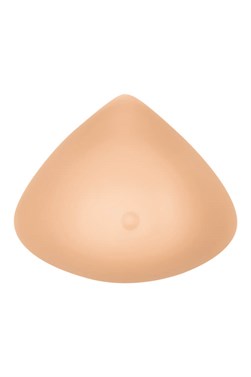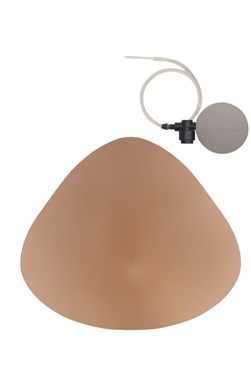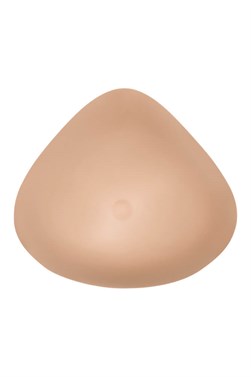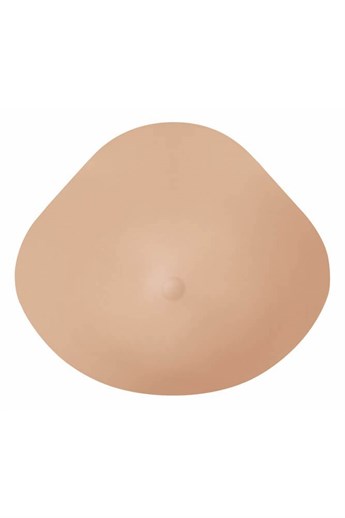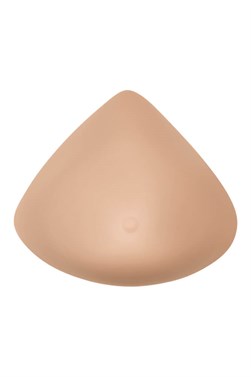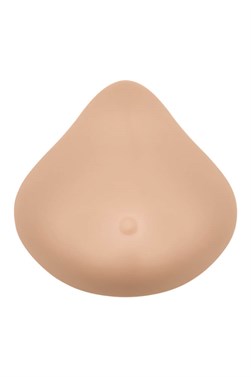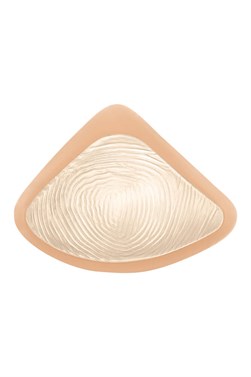“The surgical techniques change the requirements”
Amoena Global Head of Silicones Development goes behind the scenes: How breast forms help after mastectomy

Helmut Wild is responsible for the development of breast prostheses at Amoena. In a recent interview, the experienced engineer for plastics technology explains how wearers’ needs differ worldwide and why he initially misjudged the potential of an adhesive breast prosthesis.
Editor: You have been developing breast prostheses for over 30 years. How has the market changed over the decades?
Helmut Wild: In terms of time, I would not want to classify that. Product development is primarily geared to the needs of breast-operated women - and they vary greatly from country to country. In the U.S., women typically prefer the feel of a weight-reduced breast prosthesis and "the lighter, the better". In Germany however, this development began later. Spaniards and Italians, on the other hand, tend to wear the standard weight prostheses.
To balance the weight of the missing breast 1:1?
Correct. In the past this was quite commonplace; today, the weight-reduced prostheses have prevailed. When balanced 1:1, women can find the weight of the prosthesis heavier than the natural side, even when supported by a pocketed bra. In addition to country-specific habits, there are also anatomically different breast sizes. Generally speaking, British and Australian women have on average rather large breasts, Asians tend to be smaller, whilst in Europe, German women are somewhere in the middle, but with a larger underbust circumference
What exactly are "weight-reduced breast prostheses"?
For weight-reduced prostheses, lightweight fillers are added to the silicone. We developed these in the mid-1990s. As a result, they can be up to 40
The costs for the breast prosthesis are not reimbursed in every country
Are the same types of prostheses used today as they were 30 years ago?
No, and that's mainly because of the new surgical methods. Years ago when diagnostics, surgical techniques, and follow-up were not as advanced as they are today, the affected breasts often had their large pectoral muscles removed, as well as numerous lymph nodes from the armpit. The resulting tissue deficit and the scar area were very extensive, and accordingly, broad, deep areas had to be covered with the breast prostheses.
" Today,
|
This enormously changes the requirements for the shape and size of the prostheses - at least in the medically advanced countries such as Europe or North America.
In countries like Russia or China is this different?
The medical care there is not comparable with that in Central Europe. Breast cancer patients in Russia and China often are not given the option to have radiation or chemotherapy. Mostly just the diseased breast is removed. The aesthetic result is not considered important, only survival counts.
What about the reimbursement of breast prostheses?
Very different. In developed Western countries, the cost of the prostheses is usually reimbursed. Elsewhere, women usually have to pay for this care themselves. Breast prostheses tend to be considered a cosmetic product in those countries and are not a medical necessity. Often in many African countries, only women who are financially well-off can afford a breast-balancing treatment. Fortunately, breast cancer is relatively rare in Asia. In Japan, one in 30 women develops breast cancer whereas in the U.S. it’s one in eight.
„Silicone adapts naturally to the body “
At the beginning of our conversation, you mentioned the different breast sizes. Is it more demanding to make large prostheses?
The manufacturing process is the same. The difficulty lies rather in matching the breast prosthesis and the pocketed bra. For an A, B or C cup this is usually not a problem. The care of women with larger breasts is actually a bit more complicated. But Amoena has good solutions, both for breast prostheses and pocketed bras. Our textile designers pay close attention to large sizes throughout the course of the development process.
Why are breast [prostheses] always made of silicone?
Silicone is soft, adapts naturally to the body and comes closest to the female breast in its movement behaviour. It is also extremely skin friendly.
You know the requirements of women on breast prostheses quite well. Nevertheless, have you ever been surprised by the reaction of the customers to
When we developed an adhesive prosthesis in the late 1990s, we expected a huge demand. Unlike standard prostheses, this particular breast form was developed so that women could wear it without the aid of a pocketed bra, by applying it directly to the skin. The material of the Contact breast form ensures that it adheres to the chest wall, thereby simulating the movement of a natural breast.
That sounds really good.
We thought so too – and the theory was right. In fact, many women do find the Contact breast form a huge benefit and subsequently don’t want to wear anything else. Others, however, would rather not have to tend to their breast form quite so much after surgery.
What do you mean?
If a woman wears her prosthesis in a mastectomy bra, she only has to insert it in the morning. An adhesive breast prosthesis requires a bit more effort because it is attached to the skin, which means it must be cleaned before application. This extra step means some women shy away from choosing the Contact breast form. However, those who try it get used to it relatively quickly and then become real fans or even ambassadors for the Contact. For them, cleaning the prosthesis is simply part of everyday life - like showering and brushing your teeth
The
Maybe in the U.S. – where women tend to be more expressive and open about their surgeries. As a rule, breast-operated women don’t require any decoration from us. But who knows; never say never.
23. October 2017
Foto: Tobias Gratz

Stella Hombach
E-Mail-Address: stella.hombach@amoena.com





